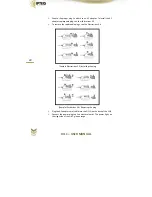
HIL
1
–
USER
MANUAL
8
recommended
by
Ipteq
is
likely
to
result
in
interference
to
radio
and
TV
reception.
Changes
or
modifications
made
to
this
equipment,
not
expressly
approved
by
Ipteq
or
parties
authorized
by
Ipteqcould
void
the
user’s
authority
to
operate
the
equipment.
NOTE:
The
manufacturer
is
not
responsible
for
any
radio
or
TV
interference
caused
by
unauthorized
modifications
to
this
equipment.
Such
modifications
could
void
the
user’s
authority
to
operate
the
equipment.
FCC
conditions
This
device
complies
with
part
15
of
the
FCC
Rules.
Operation
is
subject
to
the
following
two
conditions:
1.
This
device
may
not
cause
harmful
interference.
2.
This
device
must
accept
any
interference
received,
including
interference
that
may
cause
undesired
operation.
Contact
Ipteq
S.A.
Avenue
du
Casino
52
1820,
Montreux–
Switzerland
TEL.
+41
22
548
36
01
FAX.
+41
22
594
84
26
www.ipteq.com
Caution:
Exposure
to
Radio
Frequency
Radiation.
The
SAR
limit
of
USA
(FCC)
is
1.6
W/kg
averaged
over
one
gram
of
tissue.
Device
types
HIL
1
(FCC
ID:PVIHIL1IPTEQ)
has
also
been
tested
against
this
SAR
limit.
The
highest
SAR
value
reported
under
this
standard
during
product
certification
when
properly
worn
on
the
body
is
0.212
W/kg.
This
device
was
tested
for
typical
body
‐
worn
operations
with
the
back
of
the
device
contact
with
the
body.
The
use
of
belt
clips,
holsters
and
similar
accessories
should
not
contain
metallic
components
in
its
assembly.
The
use
of
accessories
that
do
not
satisfy
these
requirements
may
not
comply
with
FCC
RF
exposure
requirements,
and
should
be
avoided.
The
radiated
output
power
of
the
Wireless
LAN
is
far
below
the
FCC
radiofrequency
exposure
limits.
Nevertheless,
the
Wireless
LAN
shall
be
used
in
such
a
manner
that
the
potential
for
human
contact
during
normal
operation
is
minimized.
The
installer
of
this
radio
equipment
must
ensure
that
the
antenna
is
located
or
pointed
such
that
it
does
not
emit
RF
field
in
excess
of
Health
Canada
limits
for
Содержание HIL1
Страница 1: ......










































